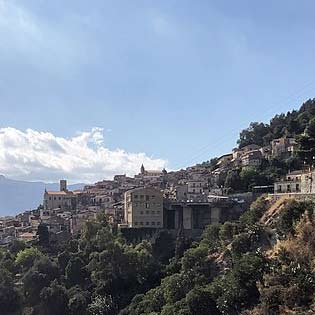Mother Church in Casalvecchio Siculo

Antonio Casablanca
The Mother Church in Casalvecchio Siculo, also known as the Cathedral of Sant'Onofrio, is the main building of worship in the village.
It was built in the 17th century on a pre-existing sacred building dating back to the 12th century and built transversely with respect to the previous building. The earthquake of 1908 caused the collapse of large portions of the nave, while the façade and apse remained unharmed.
The building is accessed via a short staircase in lava stone.
The façade, made of local stone, It is in Sicilian Baroque style. It has a single large portal flanked by two columns that support the entablature and a broken tympanum with a rectangular window in the center. On the sides of the portal there are two niches. In the upper part, above the window, there is the statue of the Patron Saint. To crown the façade there are two finely decorated volutes and the cross at the top.
The interior, with a single nave, is richly decorated. Of particular value are: the original Baroque floor made up of marbles of various colors and origins which houses a tombstone from 1711 in the centre; the coffered wooden ceiling with caryatid shelves.
During the 17th and 18th centuries, thanks to the city's well-being resulting from the cultivation of silkworms and the export of silk, the temple was enriched with works of great artistic value: The eighteenth-century high altar which is present on the at the top, an elegant throne on which you can admire a sixteenth-century wooden half-bust depicting Sant'Onofrio; the valuable statue of Sant'Onofrio, all in silver, at eye level, created in 1745 by the Messina goldsmith Giuseppe Aricò; the eighteenth-century canvas reproducing the Madonna, San Michele and San Francesco di Paola; the wooden sculpture of the SS. Crucifix from the 17th century, particularly gentle in the expression of the face; the canvas depicting the Madonna showing the Blessing Baby Jesus with architectural environments and characters in the background, a work from 1622 by Gaspare Camarda.


